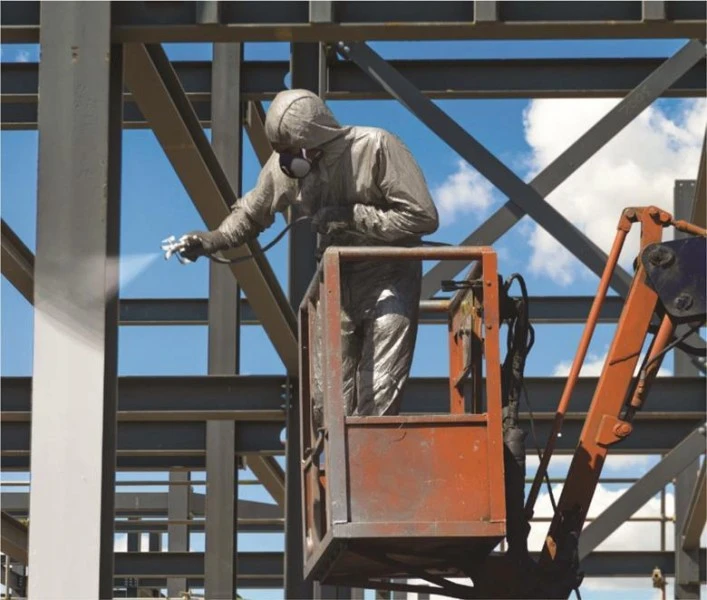Fire protection in buildings affords occupants time to escape and the emergency services the opportunity to access the area to extinguish the fire. However, research – and indeed recent tragic events – illustrates that fire protection in many buildings is incorrectly installed or inadequate.
It is vital that buildings are designed with fire protection systems to help save lives and reduce the risk of structural collapse. All those involved in building design and construction have a responsibility to increase the quality of fire protection by using best practice and the best products.
STEEL PERFORMANCE
Modern design increasingly sees steel being used as an architectural feature. When steelwork is used, intumescent paint is often the preferred choice for fire protection. This film intumescent product can be used in places where large numbers of people gather, for instance airports, offices, stadiums or shopping malls.
When exposed to fire, common building materials lose their strength – concrete cracks and spalls; wood burns and turns to char. Fire protection inhibits the failure of these construction materials for a predetermined period of time. It is important to point out that steel will start to lose its strength at approximately 400°C. At 550°C, nearly two-thirds (60%) of steel’s load-bearing capabilities will fail.
FIRE TYPES
Cellulosic fires are fuelled by flammable materials such as wood, paper, furniture and textiles and are characterised by a gradual increase in temperature to a peak of 940°C within 10 to 25 minutes.
Hydrocarbon pool fire is fuelled by hydrocarbon compounds (such as oil and gas). Having a high flame temperature, 1,000°C is achieved almost instantaneously after ignition. The heat rises to 1,100°C about five minutes later.
To assess burning rates, the fire protection industry traditionally uses fire curve data. Cellulosic and hydrocarbon fire curves are the most commonly used temperature curves. The cellulosic fire curve was in use for a number of years from the early 1900s before the hydrocarbon fire curve was developed in 1970. The need for the hydrocarbon curve became apparent when it was clear that the burning rates of materials such as plastics, wood, paper, cotton or textiles did not match the burning rate of compounds like petrol and chemicals, which was far higher.
The standard fire curve of a cellulosic fire reaches 500°C within five minutes and is relatively slow to develop, although its intensity may ultimately reach or even exceed that of a hydrocarbon fire.
STANDARDS, CERTIFYING BODIES AND PRODUCT TESTING
Legislation and regulations identify what is required in terms of fire protection and performance.
It is important that there is also “Proof of Performance” from a third party who witnessed the testing. The certification approach offers manufacturers the means to independently demonstrate the proof of performance of their products, providing specifiers and purchasers the assurance that certified products will perform.
The industry’s rigorous testing programme simulates actual conditions of weathering, applied loads and temperature extremities in typical local environmental conditions.
Regulation and certification not only applies to the finished product when it is applied to a structure, but to the whole process, from raw materials to manufacture to logistics. This ensures that the end product is the same high-quality, certified intumescent, no matter where it is produced in the world.
Fire protection requirements worldwide conform to different standards depending on the country and its building regulations, which presents a unique set of challenges that passive fire protection (PFP) coatings must comply with.
APPLICATION
Intumescent coatings must be applied over structural steel that has been newly primed.
The condition and age of the primer is very important and it must be approved and compatible with the intumescent product. The primer coat is applied in order to protect the steel substrate against corrosion. It forms a sound foundation for the subsequent coats of the intumescent paint.
A topcoat can be applied over an intumescent for aesthetic purposes where steelwork is being expressed as an architectural feature or for environments where durability is required. It is important that an approved topcoat is used.
Original article found on www.buildings.co.uk





